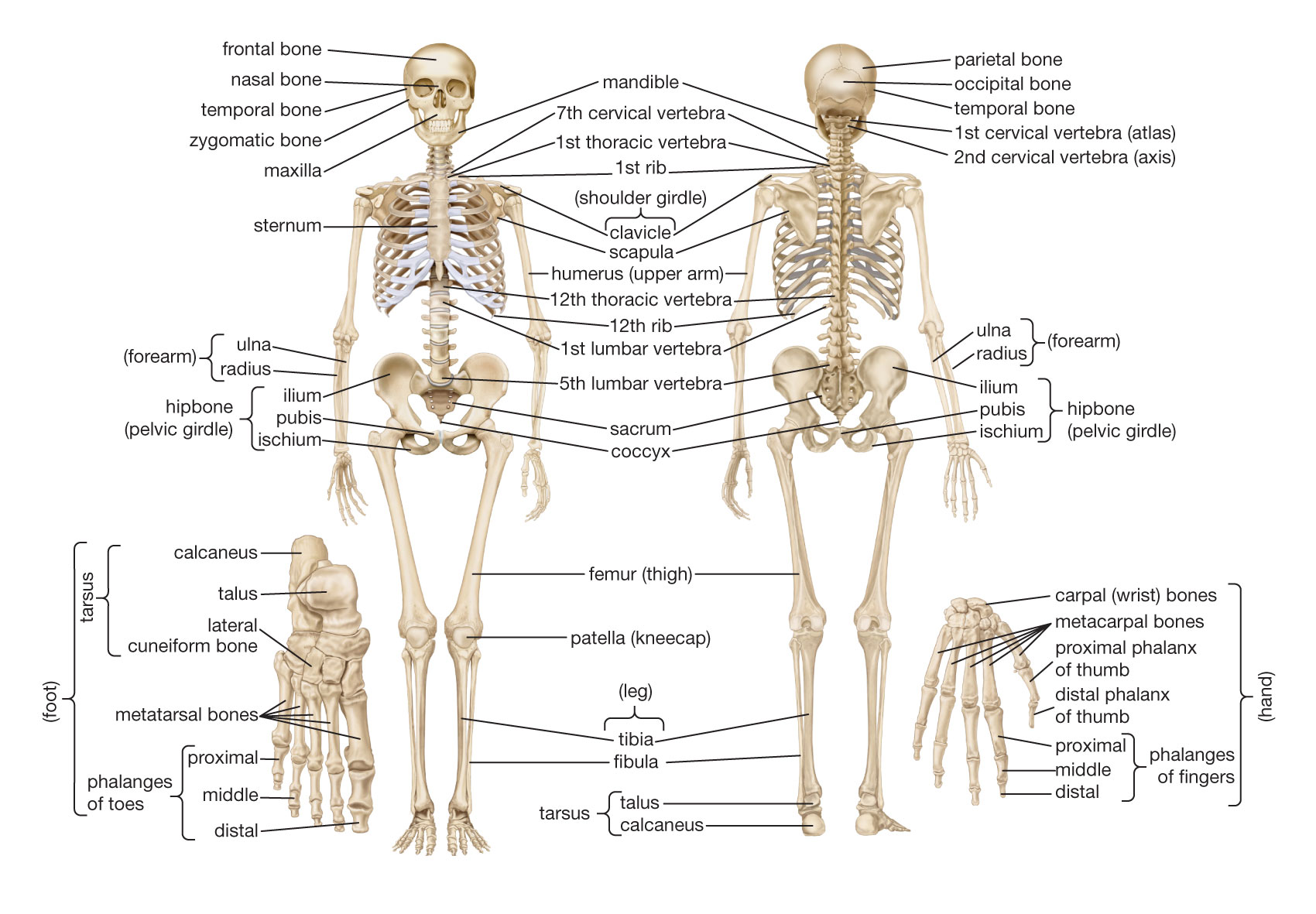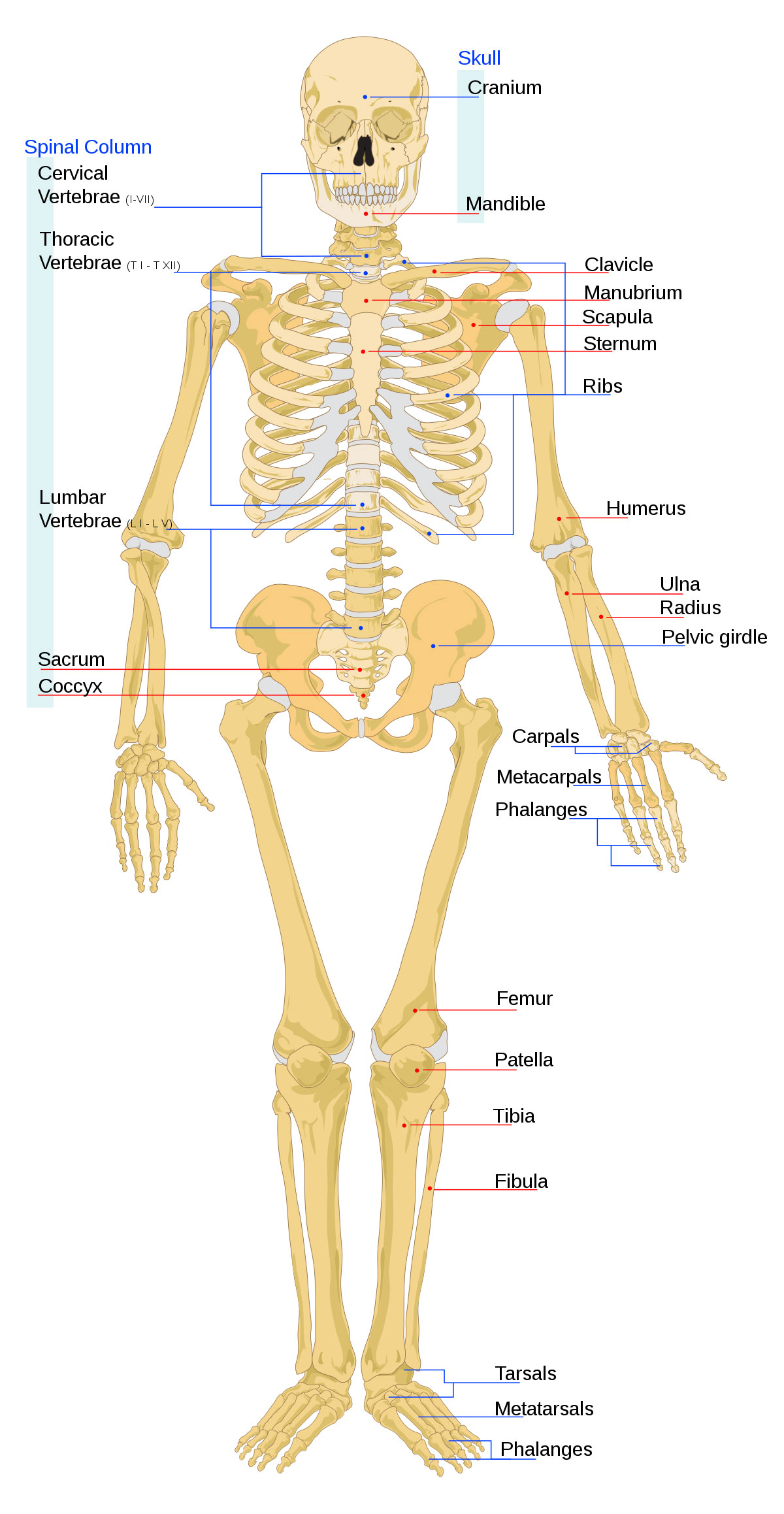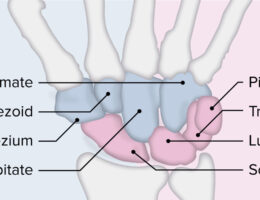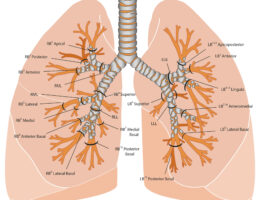A human skeleton diagram typically includes the following bones and regions with their corresponding points:
- Skull – composed of cranial and facial bones
- Spine or vertebral column – composed of vertebrae, including the cervical, thoracic, lumbar, sacrum, and coccyx
- Ribcage – composed of ribs, sternum, and thoracic vertebrae
- Shoulder girdle – composed of clavicle and scapula
- Upper limbs – composed of humerus, radius, ulna, carpals, metacarpals, and phalanges
- Pelvis – composed of ilium, ischium, and pubis bones
- Lower limbs – composed of femur, tibia, fibula, patella, tarsals, metatarsals, and phalanges
Note that there are 206 bones in the human body, and this diagram is a simplified representation of the major bones and regions.




